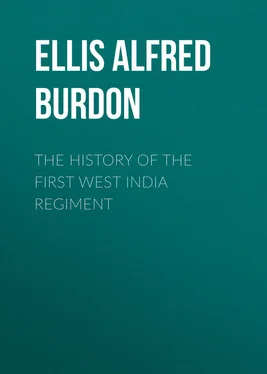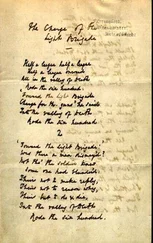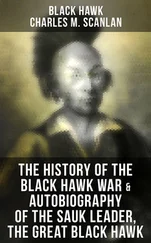Alfred Ellis - The History of the First West India Regiment
Здесь есть возможность читать онлайн «Alfred Ellis - The History of the First West India Regiment» — ознакомительный отрывок электронной книги совершенно бесплатно, а после прочтения отрывка купить полную версию. В некоторых случаях можно слушать аудио, скачать через торрент в формате fb2 и присутствует краткое содержание. Жанр: foreign_antique, foreign_prose, на английском языке. Описание произведения, (предисловие) а так же отзывы посетителей доступны на портале библиотеки ЛибКат.
- Название:The History of the First West India Regiment
- Автор:
- Жанр:
- Год:неизвестен
- ISBN:нет данных
- Рейтинг книги:3 / 5. Голосов: 1
-
Избранное:Добавить в избранное
- Отзывы:
-
Ваша оценка:
- 60
- 1
- 2
- 3
- 4
- 5
The History of the First West India Regiment: краткое содержание, описание и аннотация
Предлагаем к чтению аннотацию, описание, краткое содержание или предисловие (зависит от того, что написал сам автор книги «The History of the First West India Regiment»). Если вы не нашли необходимую информацию о книге — напишите в комментариях, мы постараемся отыскать её.
The History of the First West India Regiment — читать онлайн ознакомительный отрывок
Ниже представлен текст книги, разбитый по страницам. Система сохранения места последней прочитанной страницы, позволяет с удобством читать онлайн бесплатно книгу «The History of the First West India Regiment», без необходимости каждый раз заново искать на чём Вы остановились. Поставьте закладку, и сможете в любой момент перейти на страницу, на которой закончили чтение.
Интервал:
Закладка:
Endless correspondence is entailed, and sometimes questions have to remain open for months, until answers can be received from distant detachments. In small garrisons, also, drill becomes a mere farce; for, after the clerks, employed men, and men on guard and in hospital are deducted, there are perhaps only a dozen men or so left for parade. In spite of all these drawbacks the regiments still maintain a wonderful efficiency, and afford another proof of the soldierlike qualities of the West India negro.
Another disadvantage is that a West India regiment is never seen in England, the British public knows nothing of such regiments, has no friends, relatives, or acquaintances in their ranks, and consequently takes no interest in them. Yet they are a remarkably fine body of men, and a picked battalion of the Guards would look small beside them if brigaded with them in Hyde Park. So little is known, that I have sometimes been asked if the officers of West India regiments are also black, and it is with a view to making the regiment to which I have the honour to belong better known to the public at large, that the following history has been written. There has been no attempt at descriptive writing, facts being merely collected from official documents, so that the authenticity of the narrative may be unquestionable.
In order that the earlier chapters may be the more readily understood, it may be as well to state that, with the 1st West India Regiment, which was called into existence in the London Gazette of the 2nd of May, 1795, were incorporated two other corps; of which one, the Carolina Corps, had been in existence since 1779, while the other – Malcolm's, or the Royal Rangers – had been raised in January or February, 1795. It is from the Carolina Corps that the 1st West India Regiment derives the Carolina laurel, borne on the crest of the regiment.
CHAPTER I.
THE ACTION AT BRIAR CREEK, 1779 – THE ACTION AT STONO FERRY, 1779
In the autumn of 1778, during the War of the American Independence, the British commanders in North America determined to make another attempt for the royal cause in the Southern States of Georgia and South Carolina, which, since the failure of Lord Cornwallis at the siege of Charlestown in July, 1776, had been allowed to remain unmolested. With this view they despatched Colonel Campbell, in November, from New York, with the 71st Regiment, two battalions of Hessians, three of Loyal Provincials, 1 1 De Lancey's Corps, the New York Volunteers, and Skinner's Corps.
and a detachment of Artillery, the whole amounting to about 3500, to make an attempt upon the town of Savannah, the capital of Georgia. Arriving off the mouth of the Savannah River on the 23rd of December, Colonel Campbell was so rapidly successful, that, by the middle of January, not only was Savannah in his hands, but Georgia itself was entirely cleared of American troops.
It was about this time that the South Carolina Regiment, the oldest branch of the 1st West India Regiment, was raised. Numerous royalists joined the British camp and were formed into various corps; 2 2 "Annual Register," 1779, Beatson's "Memoirs," Gordon's "History of the American War," etc. etc.
and the South Carolina Regiment is first mentioned as taking part in the action at Briar Creek on the 3rd of March, 1779, 3 3 Beatson's "Naval and Military Memoirs," vol. iv. p. 492.
the corps then being, according to Major-General Prevost's despatch, about 100 strong. The action at Briar Creek occurred as follows:
In the early part of 1779, General Prevost's 4 4 Major-General Prevost had come from Florida and assumed command in January.
force was distributed in posts along the frontier of Georgia; Hudson's Ferry, twenty-four miles above Savannah, being the upper extremity of the chain. Watching these posts was the American general, Lincoln, with the main body of the American Army of the South, at Purrysburgh, about twenty miles above Savannah, and General Ashe, who was posted with about 2000 of the Militia of North and South Carolina and Georgia, at Briar Creek, near the point where it falls into the Savannah River.
General Ashe's position appeared most secure, his left being covered by the Savannah with its marshes, and his front by Briar Creek, which was about twenty feet broad, and unfordable at that point and for several miles above it; nevertheless, General Prevost determined to surprise him. For the purpose of amusing General Lincoln, he made a show of an intention to pass the river; and, in order to occupy the attention of Ashe, he ordered a party to appear in his front, on the opposite side of Briar Creek. Meanwhile General Prevost, with 900 chosen men, made an extensive circuit, passed Briar Creek fifteen miles above the American position, gained their rear unperceived, and was almost in their camp before they discovered his approach. The surprise was as complete as could be wished. Whole regiments fled without firing a shot, and numbers without even attempting to seize their arms; they ran in their confusion into the marsh, and swam across the river, in which numbers of them were drowned. The Continental troops, under General Elbert, and a regiment of North Carolina Militia, alone offered resistance; but they were not long able to maintain the unequal conflict, and, being overpowered, were compelled to surrender. The Americans lost from 300 to 400 men, and seven pieces of cannon. The British lost five men killed, and one officer and ten men wounded.
After this success, the British and American forces remained on opposite sides of the River Savannah, until the end of April, when General Lincoln, thinking the swollen state of the river and the inundation of the marshes was sufficient protection for the lower districts, withdrew his forces further inland, leaving General Moultrie with 1000 men at Black Swamp. By this movement Lincoln left Charlestown exposed to the British. General Prevost at once took advantage of this, and, on the 29th of April, suddenly crossed the river, near Purrysburgh, with 2500 men, among whom was the South Carolina Regiment, which had been considerably increased by accessions of loyalists and freed negroes.
General Prevost advanced rapidly into the country, the militia under Moultrie, who had considered the swamps impassable, offering but a feeble resistance, and retiring hastily, destroying the bridges in their rear. On the 11th of May, the British force crossed the Ashley River a few miles above Charlestown, and, advancing along the neck formed by the Ashley and Cooper Rivers, established itself at a little more than cannon-shot from the city. A continued succession of skirmishes took place on that day and the ensuing night, and on the following morning Charlestown was summoned to surrender.
Negotiations were broken off in the evening, much to the disappointment of the British general, who had been led to suppose that a large proportion of the inhabitants were favourable to the royal cause, and that the city would fall easily into his hands. He now found himself in a dangerous predicament. He was without siege guns, before lines defended by a considerable force of artillery, and flanked by shipping; he was involved in a labyrinth of creeks and rivers, where a defeat would have been fatal, and General Lincoln with a force equal, if not superior to his own, was fast approaching for the relief of the city. Taking all this into consideration, General Prevost prudently struck camp that night, and, under cover of the darkness, the direct line of retreat on Savannah being closed, returned to the south side of the Ashley River. From thence the army passed to the islands of St. James and St. John, lying to the southward of Charlestown harbour, and commencing that succession of islands and creeks which extends along the coast from Charlestown to Savannah.
Читать дальшеИнтервал:
Закладка:
Похожие книги на «The History of the First West India Regiment»
Представляем Вашему вниманию похожие книги на «The History of the First West India Regiment» списком для выбора. Мы отобрали схожую по названию и смыслу литературу в надежде предоставить читателям больше вариантов отыскать новые, интересные, ещё непрочитанные произведения.
Обсуждение, отзывы о книге «The History of the First West India Regiment» и просто собственные мнения читателей. Оставьте ваши комментарии, напишите, что Вы думаете о произведении, его смысле или главных героях. Укажите что конкретно понравилось, а что нет, и почему Вы так считаете.












